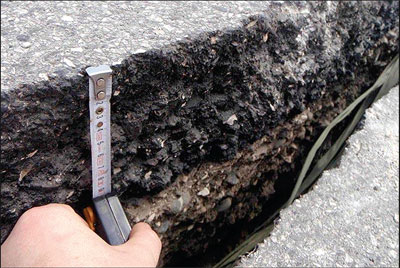
Earthquakes linked to tropical cyclones
New study may help scientists identify regions at high risk for
earthquakes
A groundbreaking study led by University of Miami (UM) scientist
Shimon Wdowinski shows that earthquakes, including the recent 2010
temblors in Haiti and Taiwan, may be triggered by tropical cyclones
(hurricanes and typhoons), according to a presentation of the findings
at the 2011 AGU Fall Meeting in San Francisco.
"Very wet rain events are the trigger," said Wdowinski, associate
research professor of marine geology and geophysics at the UM Rosenstiel
School of Marine and Atmospheric Science.

"The heavy rain induces thousands of landslides and severe erosion,
which removes ground material from the Earth's surface, releasing the
stress load and encouraging movement along faults."
Wdowinski and a colleague from Florida International University
analyzed data from quakes magnitude-6 and above in Taiwan and Haiti and
found a strong temporal relationship between the two natural hazards,
where large earthquakes occurred within four years after a very wet
tropical cyclone season.
During the last 50 years three very wet tropical cyclone events --
Typhoons Morakot, Herb and Flossie -- were followed within four years by
major earthquakes in Taiwan's mountainous regions. The 2009 Morakot
typhoon was followed by a M-6.2 in 2009 and M-6.4 in 2010. The 1996
Typhoon Herb was followed by M-6.2 in 1998 and M-7.6 in 1999 and the
1969 Typhoon Flossie was followed by a M-6.2 in 1972.
The 2010 M-7 earthquake in Haiti occurred in the mountainous region
one-and-a-half years after two hurricanes and two tropical storms
drenched the island nation within 25 days.
The researchers suggest that rain-induced landslides and excess rain
carries eroded material downstream.
As a result the surface load above the fault is lessened.
"The reduced load unclamp the faults, which can promote an
earthquake," said Wdowinski.
Fractures in Earth's bedrock from the movement of tectonic plates,
known as faults, build up stress as they attempt to slide past each
other, periodically releasing the stress in the form of an earthquake.
According to the scientists, this earthquake-triggering mechanism is
only viable on inclined faults, where the rupture by these faults has a
significant vertical movement.
Wdowinski also shows a trend in the tropical cyclone-earthquake
pattern exists in M-5 and above earthquakes. The researchers plan to
analyze patterns in other seismically active mountainous regions -- such
as the Philippines and Japan -- that are subjected to tropical cyclones
activity.
- ScienceDaily
|

